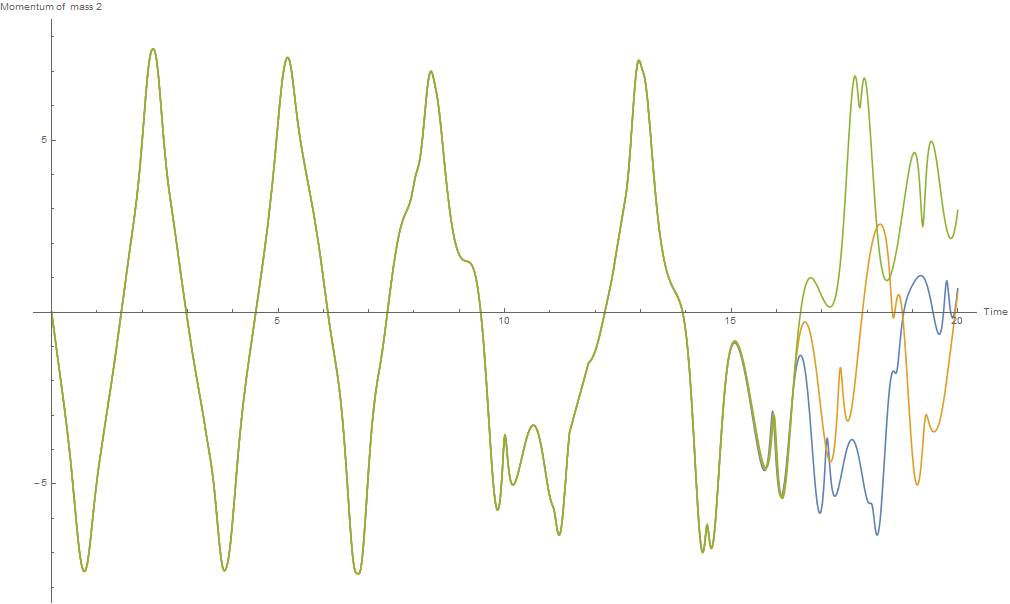I have created Mathematica code that simulates a double pendulum. So I've numerically solved for $\theta_{1}(t)$ and $\theta_{2}(t)$. I have also found the momentum from the Lagrangian as well.
My question is: what is the determining factor of when the farthest mass (i.e., $\theta_{2}(t)$) flips? I've read that this is not an easy question to answer, but if I can numerically solve for everything, is there a way of "figuring it out"?
So below are two graphs, the first one is the angle of the farthest mass, and the second one is the momentum. (Don't worry about the three different curves; these were just to show chaos):


Now, by actually watching the simulation, I can see that the second mass flips at around the 10 second mark. You can kind of guess at a few things by looking at $t=10$ on each graph, but what actually defines "flipping over" from just the angle and/or the momentum? How can I "ask my Mathematica code" to tell me when the second mass flips?
The question basically is: if I gave you only the two graphs above, could you figure out the time that the mass flipped? And how did you come to that conclusion?
Aside: With this, I am trying to determine, or at least HINT, to when the system is going to start changing completely. Interestingly, I've also created a function that determines approximately when the system "becomes totally different". I define "totally different" as the angle between the second mass being 1 radian more or less than it was with other initial conditions. With that, I can plot "the time it takes for the system to be totally different" vs. "small changes in initial condition of the farthest mass". The plot looks negative logarithmic. The only problem with this is that 1. I have arbitrarily defined "totally different", and 2. "varying initial conditions" is ambiguous--do I change both angles? One angle? The other? Would all of those curves look similar? If not, then perhaps the fact that this plot of "time to change" vs. initial conditions looks negative logarithmic is simply an intrinsic property of how I've coded everything, and not the physics behind the actual pendulum.

Anyways, my main question is how to determine when the pendulum flips from the angle and the momentum. I am looking for as many ways as possible to guess at when the system will change from some alteration in initial conditions.


NDSolve, but I don't see that as being important here. Those graphs you see above (except the last one) use time steps that are infinitesimally small (practically). It's as if we had an explicit function for theta. For now, let's just assume that the time to flip over is correct. $\endgroup$